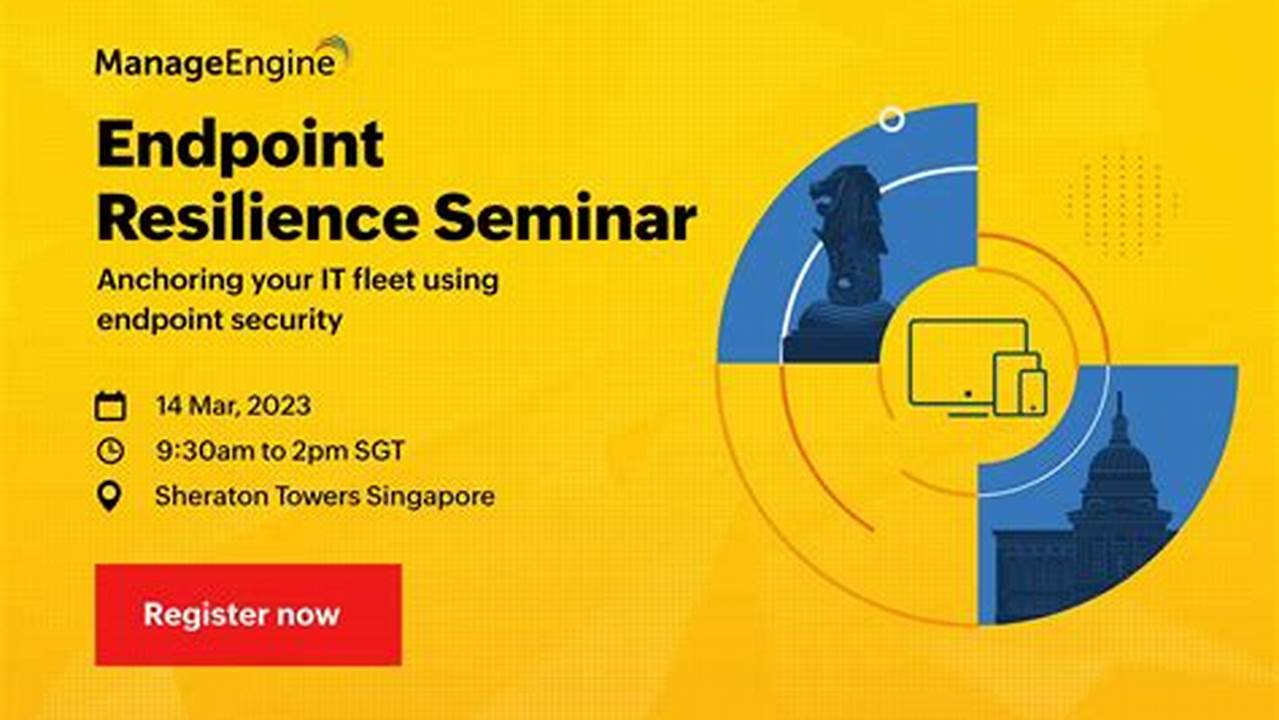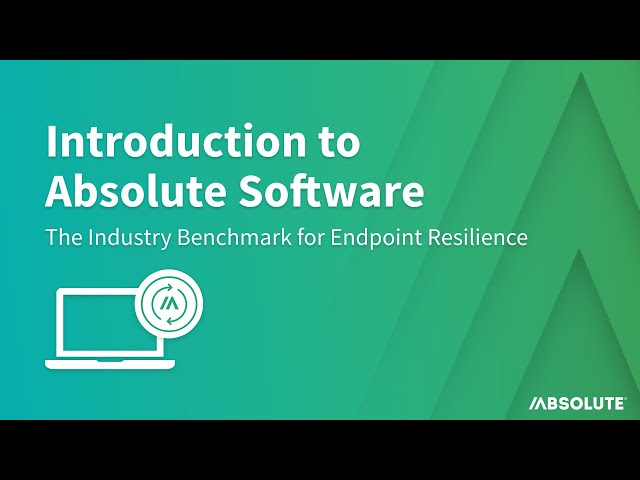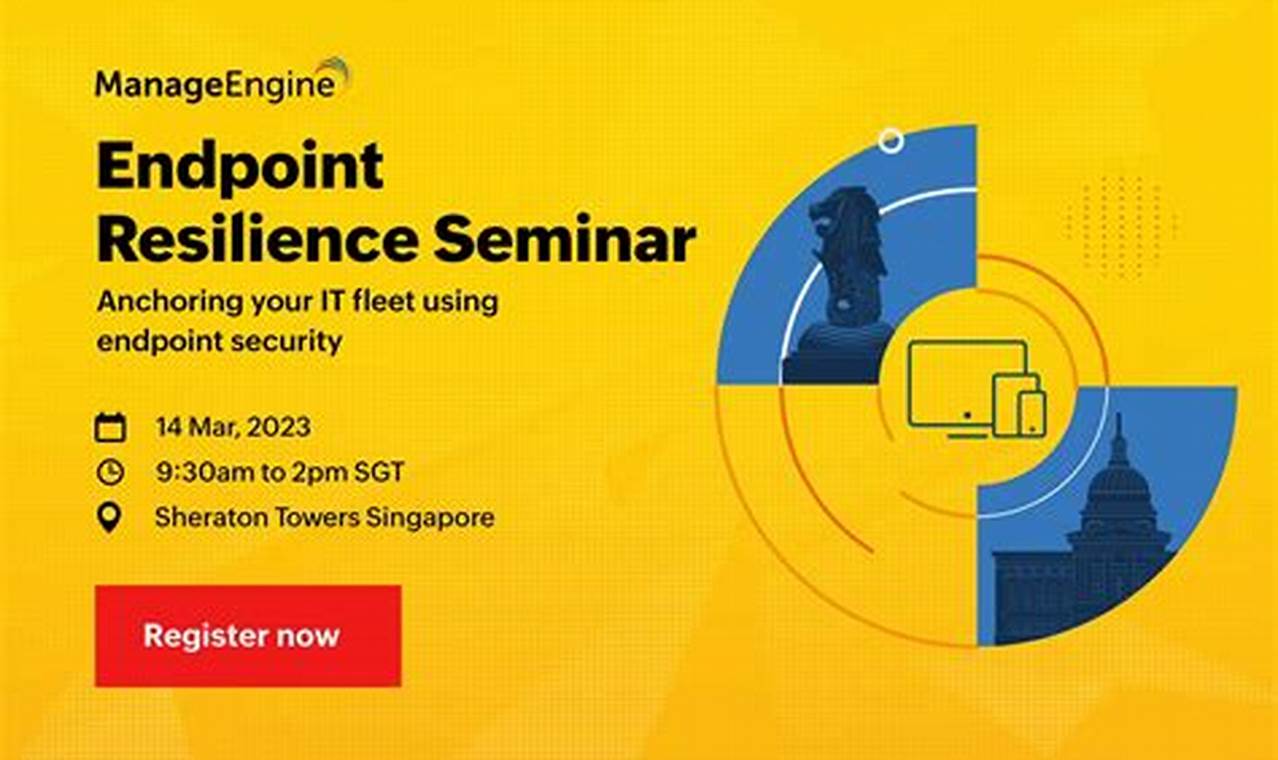
Endpoint resilience refers to the ability of network endpoints to withstand and recover from attacks, failures, and other disruptions. Essentially, it is the measure of an endpoint’s capacity to maintain its functionality and performance in the face of adverse events. To achieve endpoint resilience, organizations must implement a comprehensive strategy that encompasses security measures, operational processes, and technological solutions.
Endpoint resilience is crucial for several reasons. Firstly, it helps organizations protect their sensitive data and critical assets from unauthorized access, data breaches, and other cyber threats. Secondly, it minimizes downtime and ensures business continuity by enabling endpoints to quickly recover from failures or disruptions. Thirdly, it reduces the overall cost and impact of security incidents by preventing or mitigating their effects.
In recent years, endpoint resilience has gained increasing prominence due to the evolving nature of cyber threats and the growing sophistication of attackers. To address these challenges, organizations are adopting advanced security technologies such as endpoint detection and response (EDR) solutions, network segmentation, and multi-factor authentication. Additionally, they are implementing operational best practices, including regular software updates, patch management, and employee training programs.
Endpoint resilience
Endpoint resilience is essential for organizations to protect their sensitive data, minimize downtime, and reduce the impact of security incidents. Here are seven key aspects of endpoint resilience:
- Security measures: Implementing security measures such as endpoint detection and response (EDR) solutions, network segmentation, and multi-factor authentication.
- Operational processes: Establishing operational processes for regular software updates, patch management, and employee training programs.
- Technological solutions: Utilizing technological solutions such as endpoint detection and response (EDR) systems, network segmentation, and multi-factor authentication.
- Data protection: Protecting sensitive data by encrypting it at rest and in transit, and implementing data backup and recovery solutions.
- Business continuity: Ensuring business continuity by minimizing downtime and enabling endpoints to quickly recover from failures or disruptions.
- Cost reduction: Reducing the overall cost and impact of security incidents by preventing or mitigating their effects.
- Compliance: Meeting regulatory compliance requirements related to data protection and security.
These aspects are interconnected and interdependent. For example, security measures help to prevent attacks and data breaches, while operational processes ensure that endpoints are properly configured and maintained. Technological solutions provide the tools and capabilities to detect and respond to threats, while data protection measures ensure that sensitive data is safeguarded. Business continuity planning minimizes the impact of disruptions, while cost reduction measures help organizations to optimize their security investments. Compliance with regulatory requirements ensures that organizations are meeting their legal obligations and protecting their customers’ data.
Security measures
Security measures are essential for endpoint resilience. They help to prevent attacks and data breaches, and they can also help to detect and respond to threats. Endpoint detection and response (EDR) solutions monitor endpoints for suspicious activity and can automatically respond to threats. Network segmentation divides a network into multiple segments, which can help to contain the spread of malware and other threats. Multi-factor authentication requires users to provide multiple forms of authentication, which makes it more difficult for attackers to gain access to endpoints.
- EDR solutions can detect and respond to threats in real time, which can help to prevent data breaches and other security incidents.
- Network segmentation can help to contain the spread of malware and other threats by isolating different parts of the network from each other.
- Multi-factor authentication makes it more difficult for attackers to gain access to endpoints, even if they have stolen a user’s password.
These security measures are essential for endpoint resilience. By implementing these measures, organizations can help to protect their endpoints from attacks and data breaches.
Operational processes
Operational processes are essential for endpoint resilience. They ensure that endpoints are properly configured and maintained, and that employees are trained on security best practices. This helps to prevent attacks and data breaches, and it also helps to detect and respond to threats.
- Regular software updates: Software updates often include security patches that fix vulnerabilities that could be exploited by attackers. By keeping software up to date, organizations can help to prevent attacks and data breaches.
- Patch management: Patch management is the process of identifying, acquiring, and installing software updates. By having a patch management process in place, organizations can ensure that their endpoints are always up to date with the latest security patches.
- Employee training: Employee training is essential for endpoint resilience. Employees need to be trained on security best practices, such as how to identify phishing emails and how to avoid downloading malicious software. By training employees on security best practices, organizations can help to prevent attacks and data breaches.
These operational processes are essential for endpoint resilience. By implementing these processes, organizations can help to protect their endpoints from attacks and data breaches.
Technological solutions
Technological solutions play a vital role in endpoint resilience. They provide the tools and capabilities to detect and respond to threats, and they can also help to prevent attacks and data breaches.
Endpoint detection and response (EDR) systems monitor endpoints for suspicious activity and can automatically respond to threats. Network segmentation divides a network into multiple segments, which can help to contain the spread of malware and other threats. Multi-factor authentication requires users to provide multiple forms of authentication, which makes it more difficult for attackers to gain access to endpoints.
These technological solutions are essential for endpoint resilience. By implementing these solutions, organizations can help to protect their endpoints from attacks and data breaches.
One real-life example of the importance of technological solutions for endpoint resilience is the WannaCry ransomware attack of 2017. This attack exploited a vulnerability in the Windows operating system to spread rapidly across the world, infecting over 200,000 computers. Organizations that had implemented EDR systems and network segmentation were able to contain the spread of the attack and minimize its impact. Those that had not implemented these solutions were much more severely affected.
The practical significance of understanding the connection between technological solutions and endpoint resilience is that it can help organizations to make informed decisions about their security investments. By investing in the right technological solutions, organizations can improve their endpoint resilience and reduce the risk of attacks and data breaches.
Data protection
Data protection is an essential component of endpoint resilience. It involves protecting sensitive data from unauthorized access, data breaches, and other threats. By encrypting data at rest and in transit, and implementing data backup and recovery solutions, organizations can help to ensure that their data is safe and secure, even if their endpoints are compromised.
Encrypting data at rest means encrypting it when it is stored on a device, such as a hard drive or USB drive. Encrypting data in transit means encrypting it when it is being transmitted over a network, such as the internet or a local area network (LAN). By encrypting data at rest and in transit, organizations can help to protect it from unauthorized access, even if the device or network is compromised.
Data backup and recovery solutions are essential for protecting data in the event of a hardware failure, software corruption, or other data loss event. By regularly backing up data to a secure location, organizations can ensure that they can recover their data if it is lost or corrupted. Data backup and recovery solutions can also be used to restore data to a previous state, which can be helpful in the event of a ransomware attack or other security incident.
The importance of data protection as a component of endpoint resilience cannot be overstated. In today’s digital world, data is essential for businesses of all sizes. Protecting data from unauthorized access, data breaches, and other threats is essential for maintaining business continuity and reputation.
One real-life example of the importance of data protection is the Equifax data breach of 2017. This breach exposed the personal data of over 145 million Americans, including their names, Social Security numbers, and birth dates. The breach was caused by a vulnerability in Equifax’s web application, which allowed attackers to gain access to the company’s database. If Equifax had implemented stronger data protection measures, such as encrypting data at rest and in transit, the breach could have been prevented.
The practical significance of understanding the connection between data protection and endpoint resilience is that it can help organizations to make informed decisions about their security investments. By investing in data protection measures, organizations can reduce the risk of data breaches and other security incidents, and protect their sensitive data.
Business continuity
Business continuity is closely connected to endpoint resilience. Endpoint resilience ensures that endpoints are able to withstand and recover from attacks, failures, and other disruptions. Business continuity ensures that the business can continue to operate even if endpoints are compromised or unavailable.
- Minimizing downtime: Endpoint resilience helps to minimize downtime by ensuring that endpoints can quickly recover from failures or disruptions. This is important for businesses because downtime can lead to lost productivity, revenue, and customer satisfaction.
- Enabling endpoints to quickly recover from failures or disruptions: Endpoint resilience enables endpoints to quickly recover from failures or disruptions. This is important for businesses because it helps to ensure that the business can continue to operate even if endpoints are compromised or unavailable.
Endpoint resilience is an important part of business continuity planning. By implementing endpoint resilience measures, businesses can reduce the risk of downtime and ensure that their business can continue to operate even in the event of a disruption.
One real-life example of the importance of business continuity is the COVID-19 pandemic. The pandemic caused many businesses to close or operate at reduced capacity. Businesses that had implemented endpoint resilience measures were able to continue operating remotely, while businesses that had not implemented endpoint resilience measures were forced to close or lay off employees.
The practical significance of understanding the connection between business continuity and endpoint resilience is that it can help businesses to make informed decisions about their security investments. By investing in endpoint resilience measures, businesses can reduce the risk of downtime and ensure that their business can continue to operate even in the event of a disruption.
Cost reduction
Organizations can reduce the overall cost and impact of security incidents by implementing endpoint resilience measures. Endpoint resilience helps to prevent security incidents from occurring in the first place, and it also helps to mitigate the impact of security incidents that do occur.
- Prevention: Endpoint resilience measures can help to prevent security incidents from occurring in the first place. For example, endpoint detection and response (EDR) solutions can detect and block malware before it can infect endpoints. Network segmentation can help to contain the spread of malware and other threats. Multi-factor authentication can make it more difficult for attackers to gain access to endpoints.
- Mitigation: Endpoint resilience measures can also help to mitigate the impact of security incidents that do occur. For example, data backup and recovery solutions can help organizations to recover data that has been lost or encrypted in a ransomware attack. Business continuity planning can help organizations to continue operating even if endpoints are compromised or unavailable.
Endpoint resilience is a cost-effective way to reduce the overall cost and impact of security incidents. By implementing endpoint resilience measures, organizations can protect their endpoints from attacks, minimize downtime, and reduce the financial impact of security incidents.
Compliance
Compliance plays a crucial role in endpoint resilience by ensuring that organizations adhere to industry regulations and standards related to data protection and security. Meeting compliance requirements involves implementing and maintaining appropriate security measures to safeguard sensitive data, such as personally identifiable information (PII) and financial data.
Endpoint resilience is directly tied to compliance, as it provides the necessary technical and operational controls to meet regulatory obligations. By implementing endpoint resilience measures, organizations can demonstrate their commitment to data protection and security, reducing the risk of non-compliance and associated penalties.
One real-life example of the connection between compliance and endpoint resilience is the General Data Protection Regulation (GDPR), a comprehensive data protection law enforced in the European Union. GDPR mandates organizations to implement appropriate technical and organizational measures to protect personal data, including implementing robust endpoint security controls. Organizations that fail to comply with GDPR face significant fines and reputational damage.
Understanding the connection between compliance and endpoint resilience is crucial for organizations to effectively manage their security posture. By prioritizing compliance requirements and implementing endpoint resilience measures, organizations can safeguard sensitive data, reduce the risk of security breaches, and maintain their reputation as trustworthy entities.
Endpoint resilience FAQs
As an essential component of cybersecurity, endpoint resilience has generated various questions and misunderstandings. This section addresses six frequently asked questions to provide a comprehensive understanding of endpoint resilience and its implications.
Question 1: What is the significance of endpoint resilience in today’s cybersecurity landscape?
Endpoint resilience empowers organizations to fortify their network endpoints against evolving cyber threats and sophisticated attacks. By implementing robust endpoint security measures, organizations can minimize the impact of security breaches, protect sensitive data, and maintain business continuity.
Question 2: How does endpoint resilience contribute to data protection?
Endpoint resilience plays a vital role in data protection by safeguarding sensitive information stored on endpoints. Through encryption techniques and data backup solutions, endpoint resilience ensures the confidentiality and integrity of data, reducing the risk of unauthorized access and data breaches.
Question 3: What are the primary benefits of implementing endpoint resilience measures?
Implementing endpoint resilience measures offers numerous advantages, including enhanced protection against cyber threats, reduced downtime during security incidents, minimized financial losses associated with data breaches, and improved compliance with regulatory frameworks.
Question 4: How can organizations effectively evaluate their endpoint resilience posture?
Organizations can assess their endpoint resilience posture through regular security audits and vulnerability assessments. Identifying potential weaknesses and implementing appropriate remediation steps helps organizations proactively address security gaps and strengthen their endpoint resilience.
Question 5: What are the common challenges organizations face in achieving endpoint resilience?
Achieving endpoint resilience requires organizations to overcome challenges such as a lack of resources, limited expertise, and the evolving nature of cyber threats. Additionally, legacy systems and outdated technologies can hinder endpoint resilience efforts.
Question 6: How can organizations stay informed about the latest endpoint resilience trends and best practices?
Staying informed about the latest endpoint resilience trends and best practices is crucial. Organizations can leverage industry reports, attend conferences, engage with security experts, and subscribe to reputable cybersecurity publications to gain valuable insights and adapt their strategies accordingly.
In conclusion, endpoint resilience serves as a cornerstone of modern cybersecurity strategies. By addressing common concerns and providing practical guidance, these FAQs aim to enhance the understanding of endpoint resilience and empower organizations to build a robust and resilient security posture.
Next, we will delve into the crucial elements that contribute to effective endpoint resilience.
Endpoint Resilience Tips
Endpoint resilience is crucial for organizations to protect their data and networks from cyber threats. By implementing a comprehensive endpoint resilience strategy, organizations can minimize the risk of data breaches, reduce downtime, and improve their overall security posture.
Tip 1: Implement a layered security approach
A layered security approach involves implementing multiple layers of security controls to protect endpoints. This includes using firewalls, intrusion detection systems, antivirus software, and endpoint detection and response (EDR) solutions.
Tip 2: Keep software up to date
Software updates often include security patches that fix vulnerabilities that could be exploited by attackers. By keeping software up to date, organizations can reduce the risk of attacks and data breaches.
Tip 3: Educate employees about cybersecurity
Employees are often the weakest link in an organization’s security posture. By educating employees about cybersecurity best practices, organizations can help to reduce the risk of phishing attacks and other social engineering attacks.
Tip 4: Implement data backup and recovery solutions
Data backup and recovery solutions are essential for protecting data in the event of a hardware failure, software corruption, or other data loss event. By regularly backing up data to a secure location, organizations can ensure that they can recover their data if it is lost or corrupted.
Tip 5: Develop an incident response plan
An incident response plan outlines the steps that an organization will take in the event of a security incident. By having an incident response plan in place, organizations can minimize the impact of security incidents and get their systems back up and running quickly.
By following these tips, organizations can improve their endpoint resilience and reduce the risk of data breaches and other security incidents.
Endpoint resilience is an ongoing process. By continuously monitoring their security posture and implementing new security measures as needed, organizations can stay ahead of the evolving threat landscape and protect their data and networks from cyber threats.
Endpoint resilience
Endpoint resilience is the ability of an endpoint to withstand and recover from attacks, failures, and other disruptions. It is a critical component of cybersecurity, as it helps organizations to protect their data and networks from cyber threats.
In this article, we have explored the importance of endpoint resilience and discussed the key elements that contribute to it. We have also provided tips for improving endpoint resilience and highlighted the benefits of doing so.
Endpoint resilience is an ongoing process. By continuously monitoring their security posture and implementing new security measures as needed, organizations can stay ahead of the evolving threat landscape and protect their data and networks from cyber threats.
Youtube Video:


